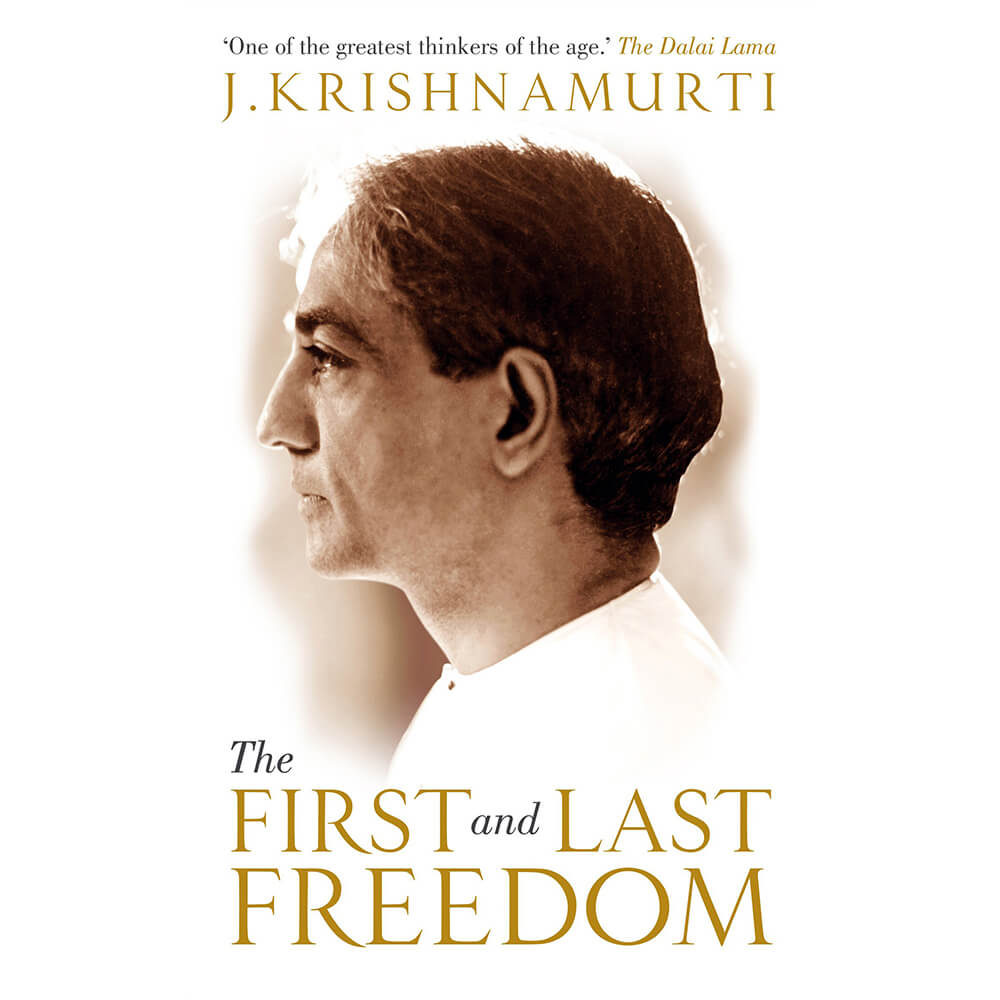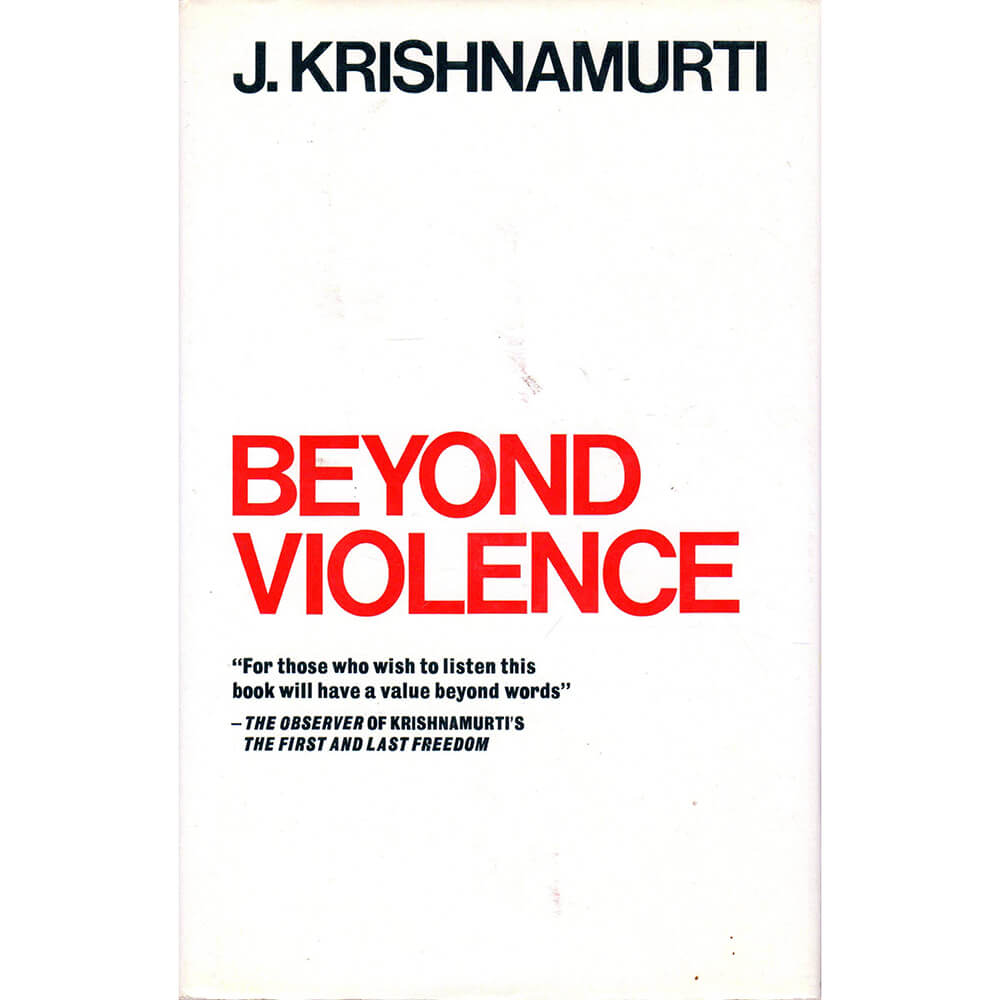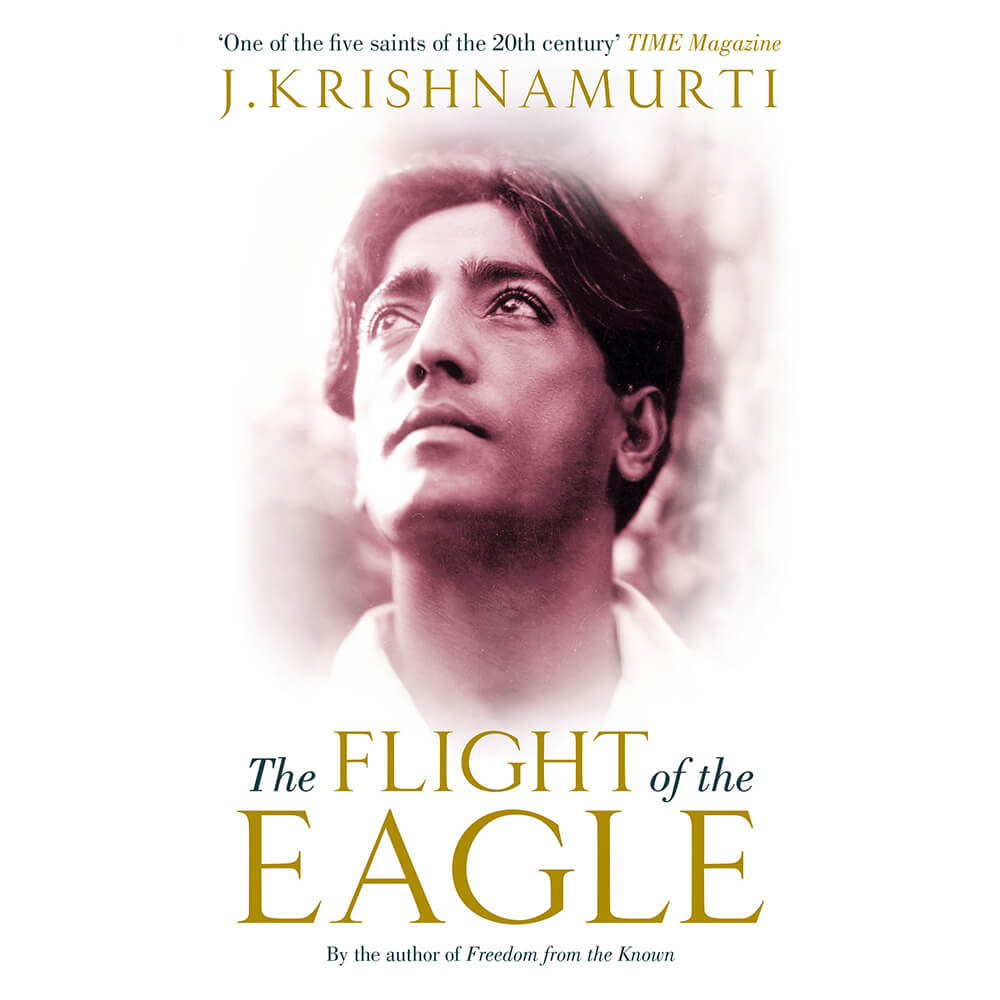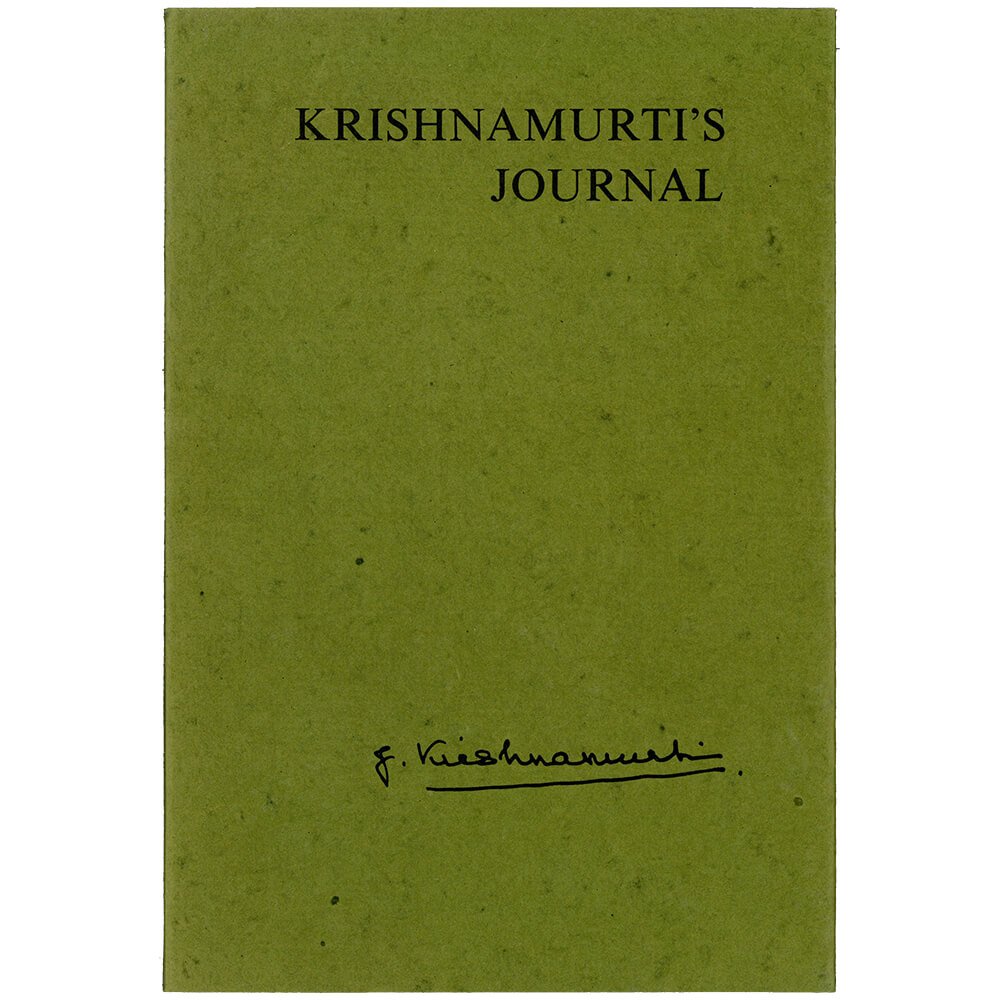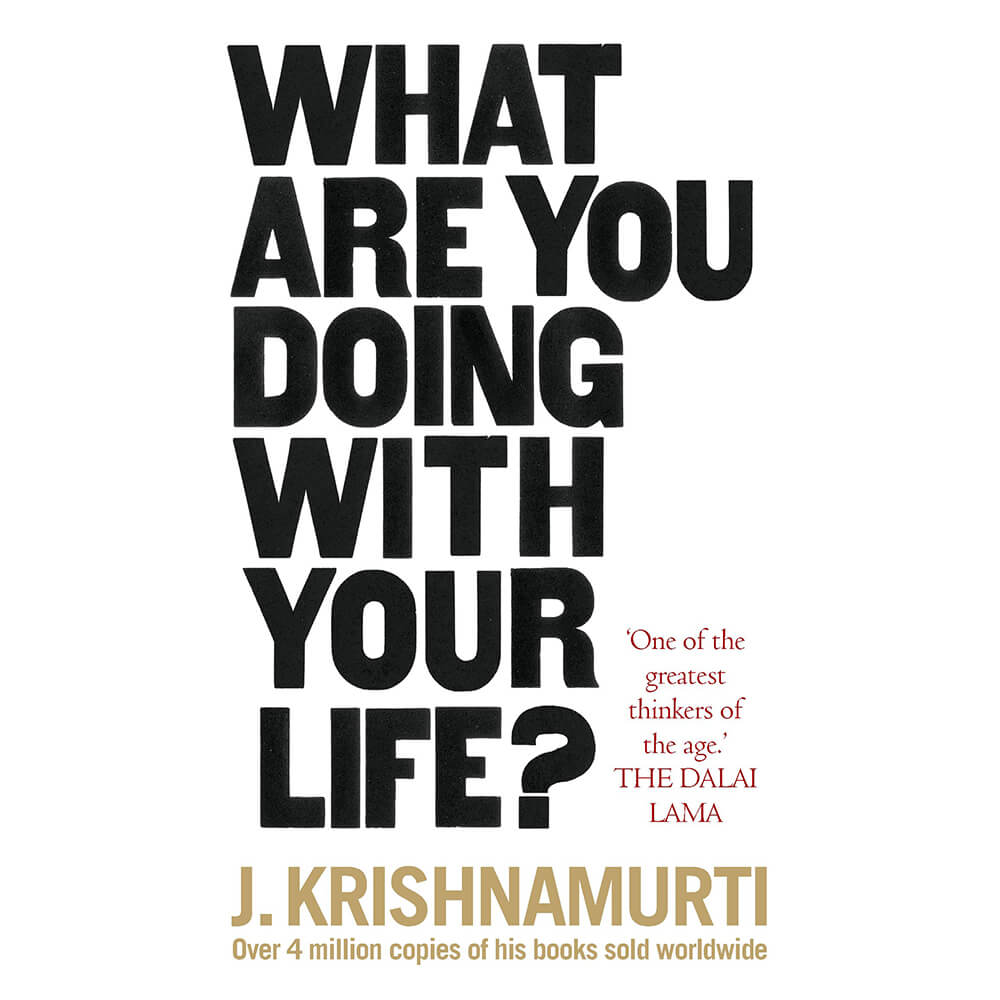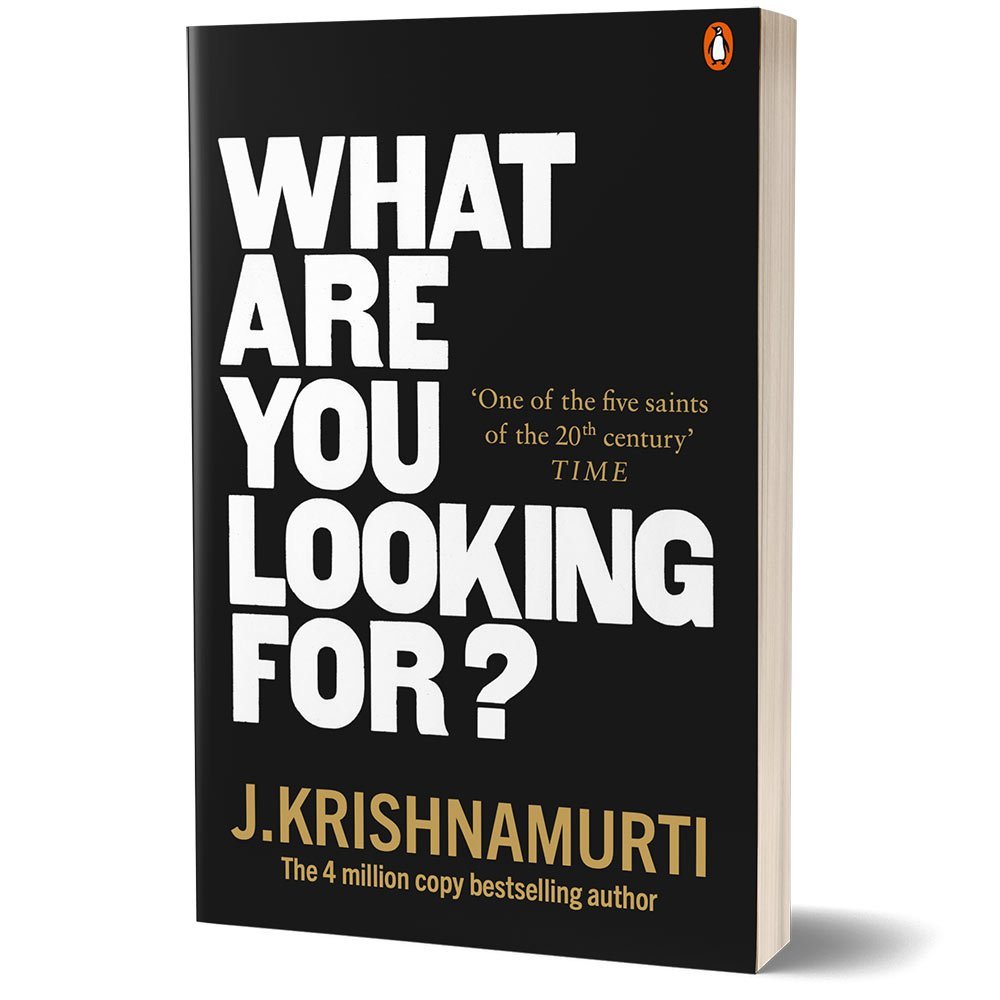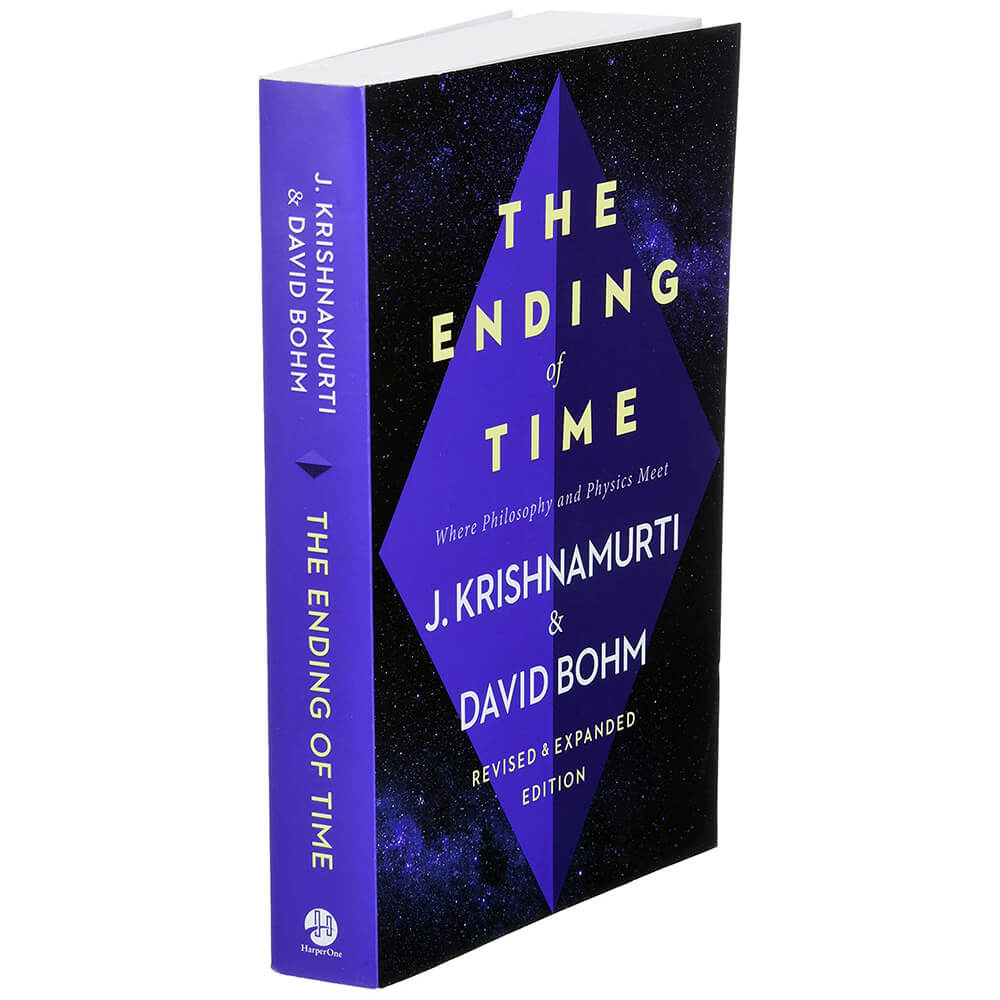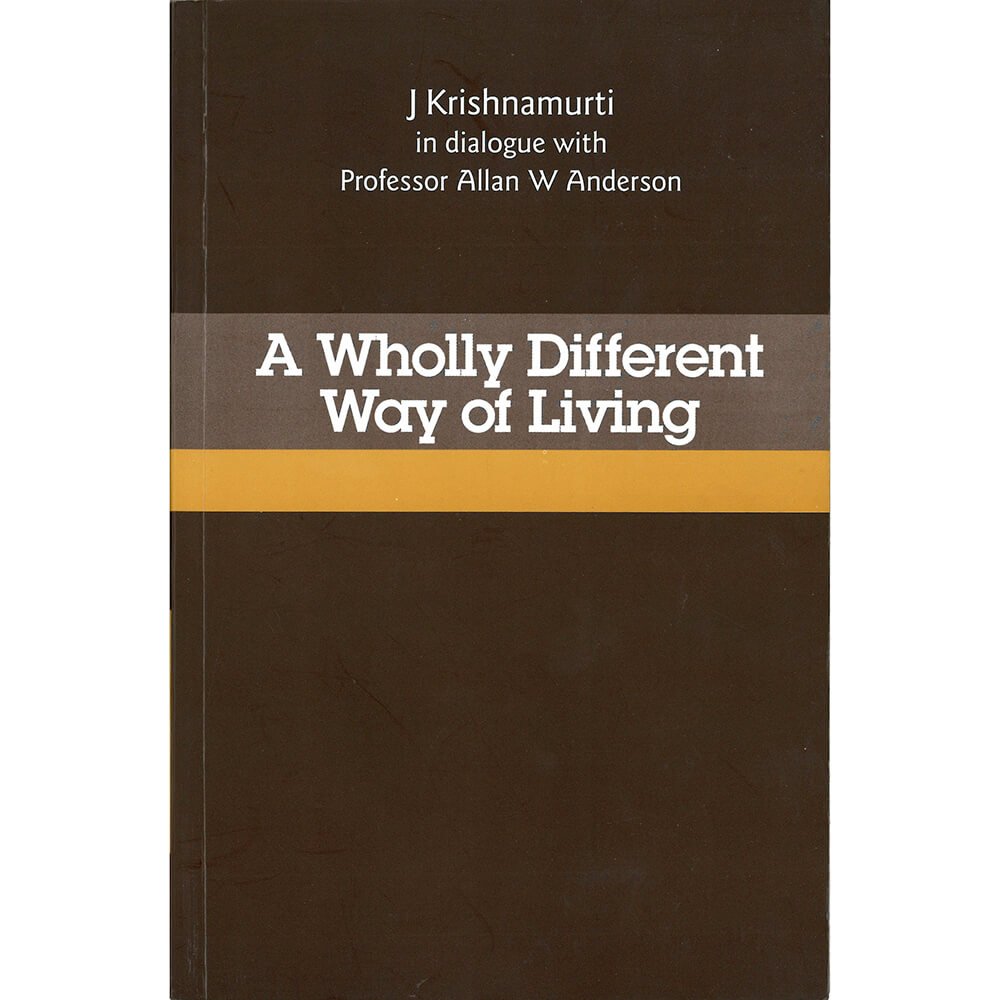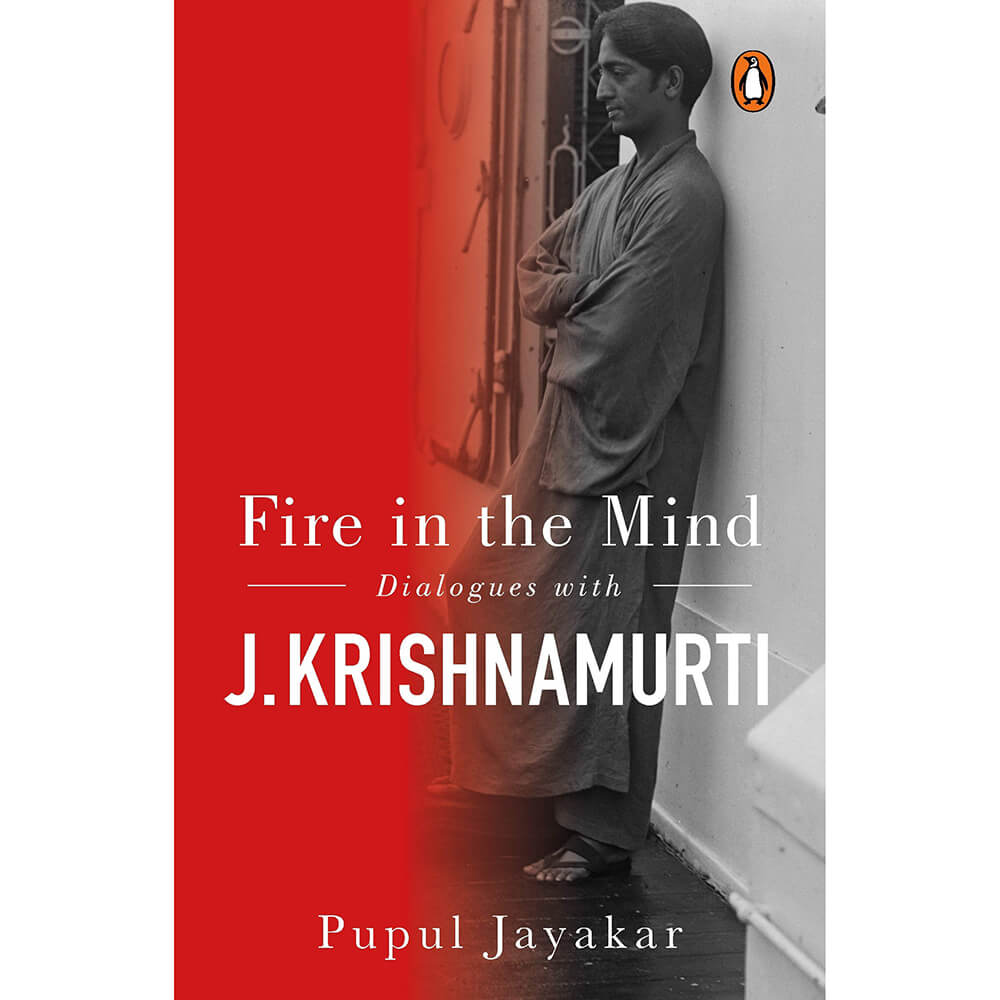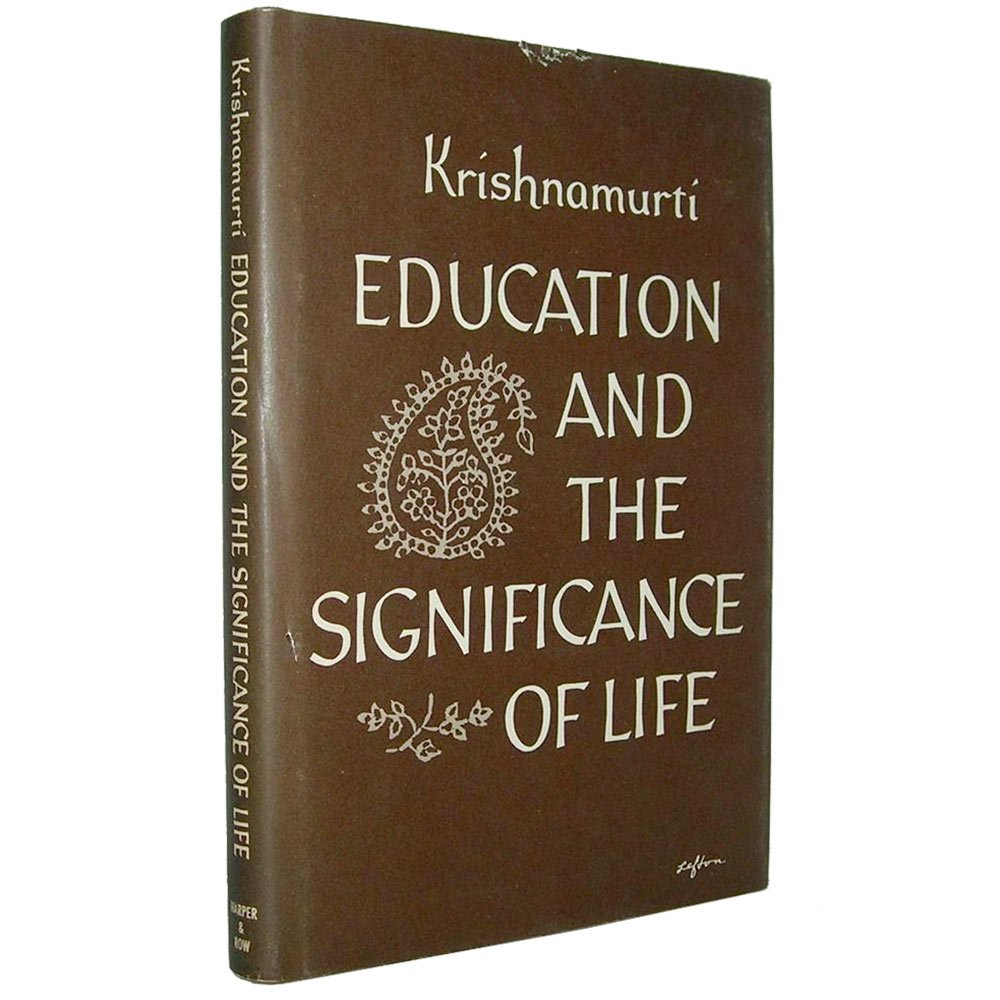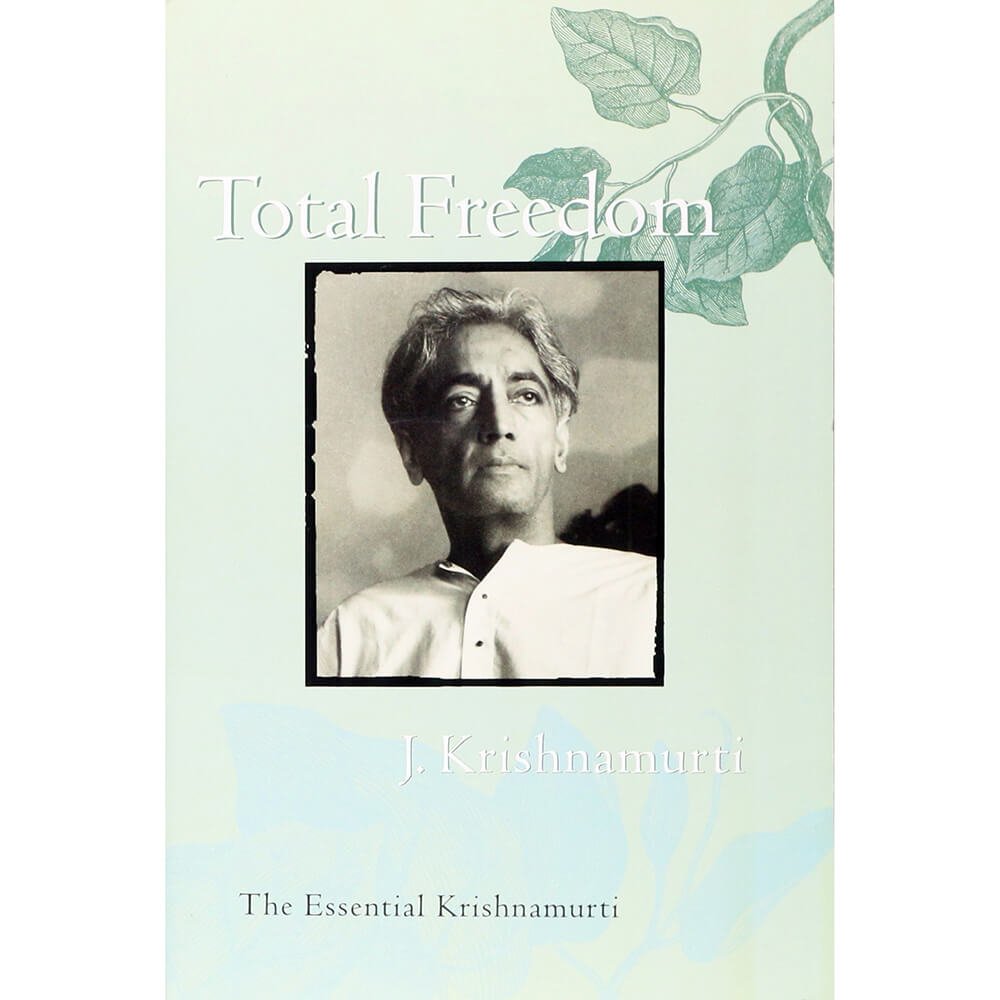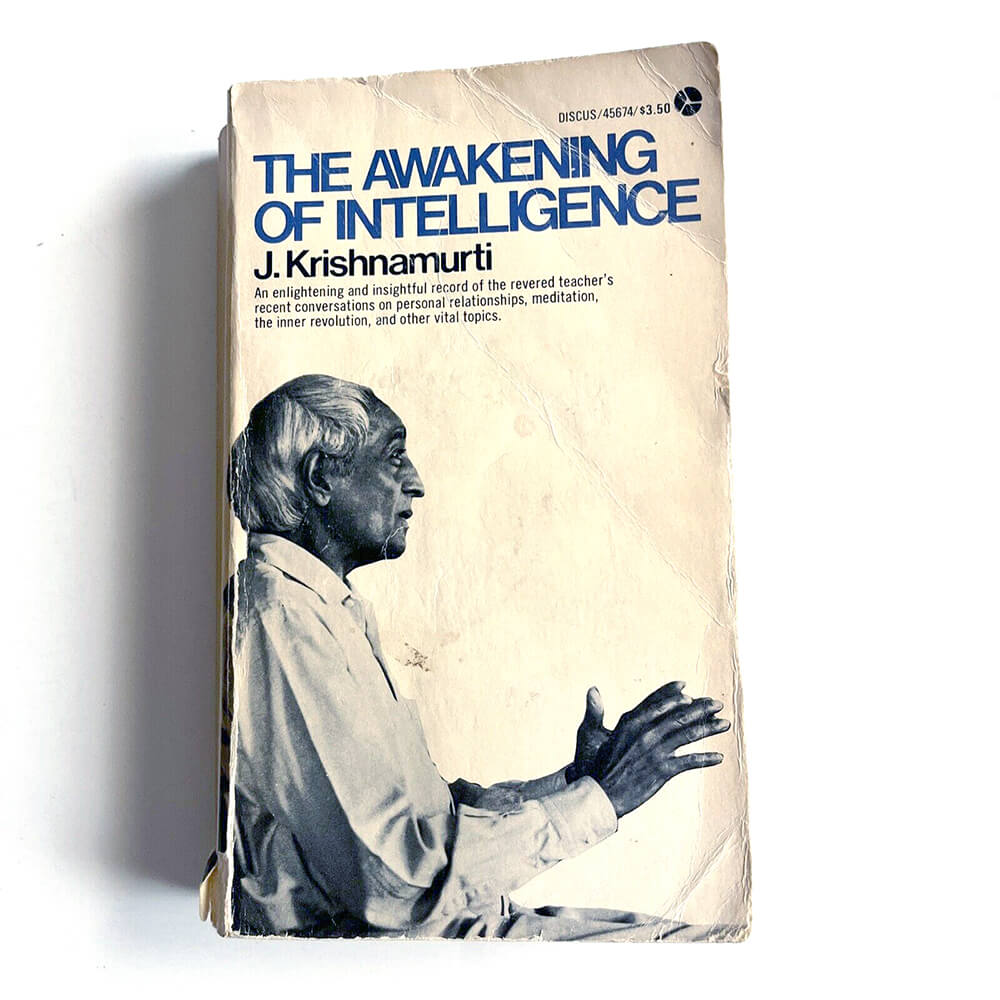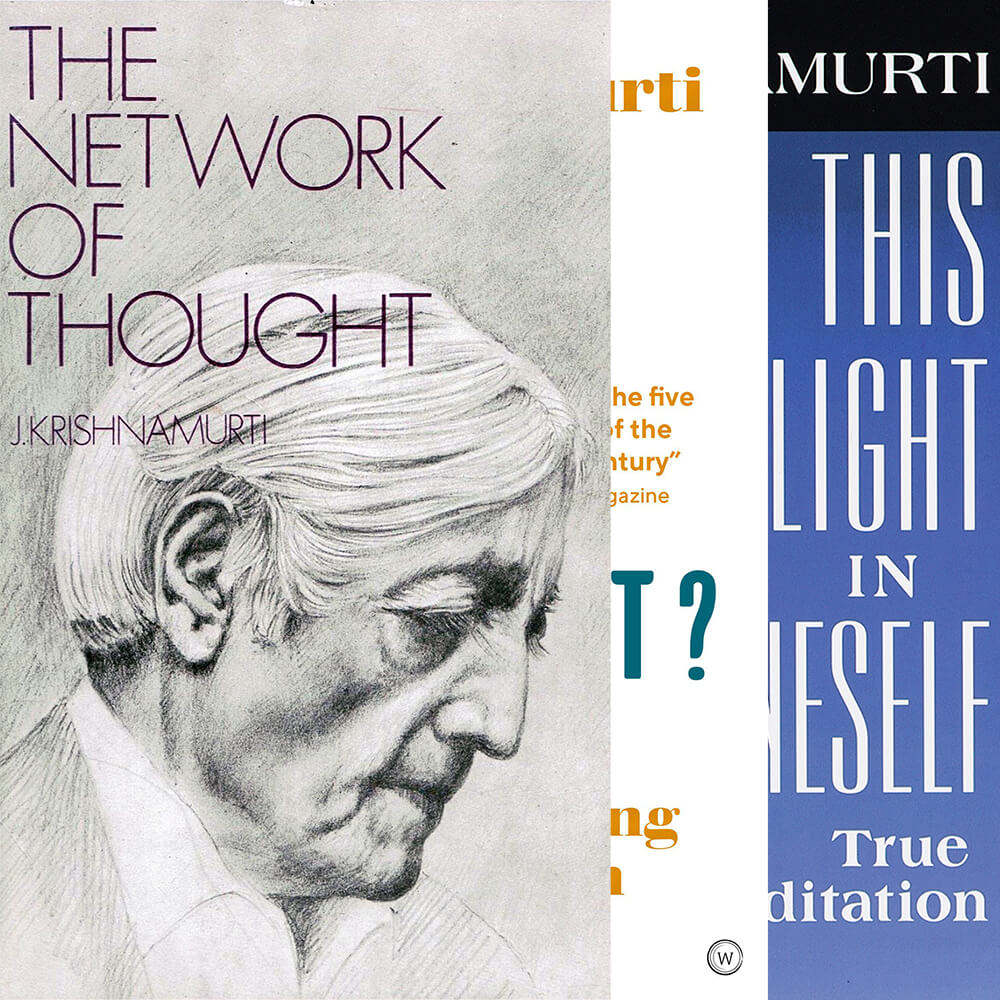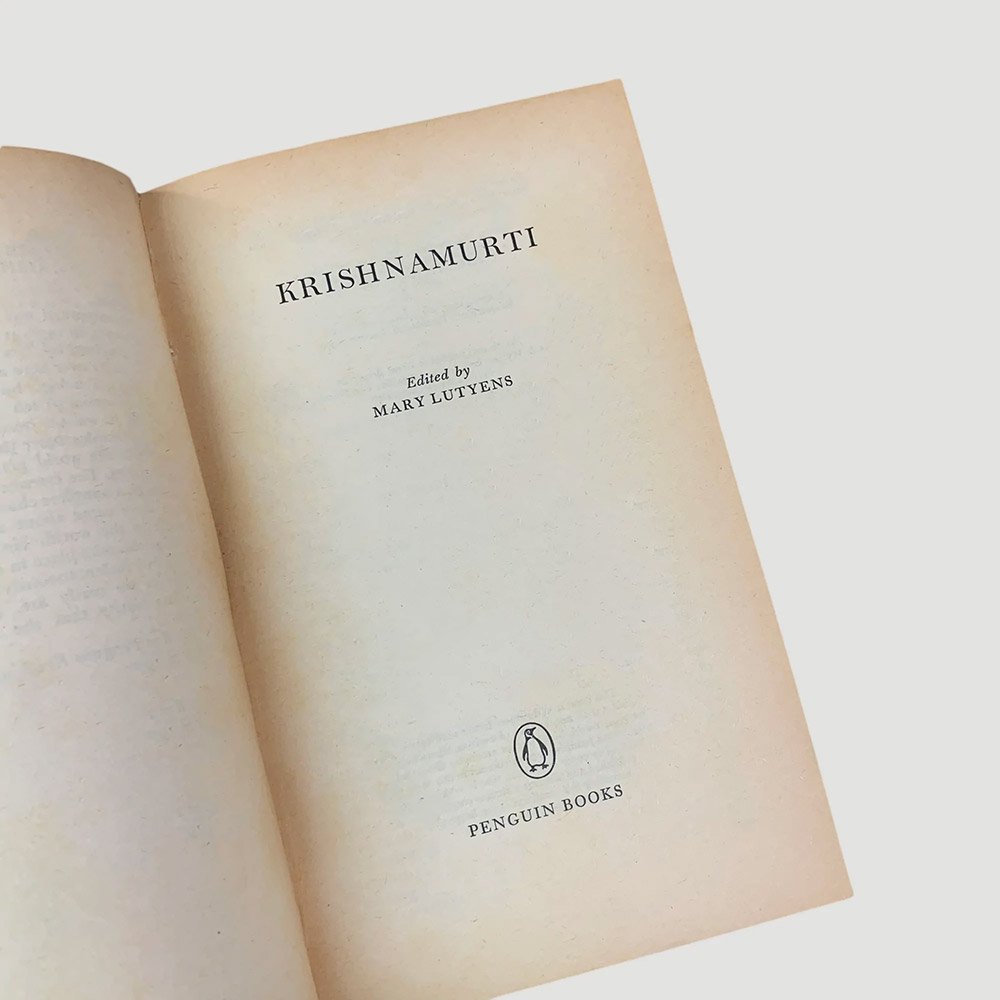
Krishnamurti Books
1: Good Introductions
The Book of Life presents 365 timeless daily meditations, developed thematically each week. As the year unfolds, the selected passages illuminate the full scope of Krishnamurti’s teachings, from authority, belief and relationship early in the year, to sex, intelligence and violence. July and August’s themes include happiness, hurt and truth, with thought, time, transformation and love being key themes September through November. Similar to many Krishnamurti talks, the year ends with religion and meditation. For everyone who has come to cherish the wisdom of this extraordinary spiritual sage, as well as anyone discovering Krishnamurti for the first time, The Book of Life is a profound collection of insights to treasure every day. ‘The story of mankind is in you, the vast experience, the deep-rooted fears, anxieties, sorrow, pleasure, and all the beliefs that man has accumulated throughout the millennia. You are that book.’
The First and Last Freedom has sold more copies than any other Krishnamurti book. Aldous Huxley, who became friends with Krishnamurti in the late 1930s, wrote the foreword in which he states, ‘Only choiceless awareness can lead to non-duality, to the reconciliation of opposites in a total understanding and a total love.’ Huxley ends his substantial introduction with Krishnamurti’s powerfully insightful words, ‘Love is love, not to be defined or described by the mind as exclusive or inclusive. Love is its own eternity: it is the real, the supreme, the immeasurable.’ More expansive than Freedom from the Known, the book contains 21 themed chapters based on talks, and a further 38 formed of questions and answers. Chapter titles include: What are we seeking? What is the self? Can Thinking solve our problems? On relationship. On the stillness of the mind. On publication, the Observer review said, ‘For those who wish to listen, this book will have a value beyond words.’
2: Classic Works
Violence is ‘like a stone dropped in a lake’: the waves spread and spread, and at the centre is the ‘me’. As long as this ‘me’ survives in any form, subtly or grossly, there must be violence, says Krishnamurti in these talks and discussions. Apart from dealing with the problem of individual and collective violence, Beyond Violence contains frequent references to what is and what is not the religious mind, a mind capable of moment-by-moment awareness. The fundamental change in the human psyche necessary to end violence in ourselves and so in the world, Krishnamurti says, can only come about through complete freedom from fear, anxiety and the desire to be secure. This book consists of edited public talks and discussions in Santa Monica, San Diego, London, Brockwood Park and Rome.
Another classic Krishnamurti book is Think on These Things. It has sold over three million copies and has been printed worldwide in 22 languages. The book explores, amongst other things, real culture. This is neither a matter of inheritance nor of learning, nor of talent, nor even of genius, but is ‘the timeless movement to find happiness, God, truth. When this movement is blocked by authority, tradition or fear, there is decay.’ Some of the questions raised in the book are: What is shyness? What is jealousy? What is happiness? What is sorrow? The introduction says, ‘The material contained in this volume was originally presented in the form of talks to students, teachers and parents, but its keen penetration and lucid simplicity will be deeply meaningful to thoughtful people everywhere, of all ages, in every walk of life.’
Krishnamurti invites us to let go of any impulse to condemn, evaluate, conclude, judge or interpret when observing ourselves or the outer world. In The Flight of the Eagle, he explores this profoundly clear seeing, in the context of the conflict, war and suffering in the world, of which we may only be partially aware, a symptom of an ‘inner blindness’. The inherent intelligence of the mind necessary to address this, Krishnamurti suggests, is being wasted in thinking based on the past, the distortion of fear and the images we hold of each other. As these talks based in Europe unfold, he urges us to ‘go into’ what he is saying, exploring with freedom from prejudice. Denying any authority in himself, Krishnamurti suggests ‘life is greater than any teaching, greater than any teacher’.
3: Written Books
Krishnamurti’s Journal and Notebook contain some of his most concise and direct teachings. Krishnamurti’s Notebook is a daily record of his perceptions and states of consciousness. It represents his most personal work. At 28, Krishnamurti underwent a spiritual experience that changed his life and was followed by years of acute and almost continuous pain in his head and spine. The Notebook shows this ‘process’ was still going on years later. The book begins: ‘In the evening it was there: suddenly it was there, filling the room, a great sense of beauty, power and gentleness. Others noticed it.’ In this unique record is what may be called the well-spring of Krishnamurti’s teaching – the whole essence is here, arising from its natural source. Krishnamurti’s Journal highlights his simple and richly poetic style of writing. Through vividly descriptive passages that reveal the extent to which his teachings are inspired by nature, Krishnamurti addresses the timeless problems of meditation, communication and self-awareness. Filled with keen observation and mystical insight, the Journal reveals a serene, open and profoundly reflective quality: ‘On a still night, in the quiet stillness of the mind, that which is everlasting beauty comes, uninvited, unsought, without the noise of recognition.’
The three books (Vol. 1, Vol. 2, Vol. 3) that make up the Commentaries on Living series are among the easiest of Krishnamurti’s books to read, even though they discuss the major questions of ambition, the nature of wisdom and fear, and what is true action, among many others. Aldous Huxley encouraged Krishnamurti to write these commentaries, which consist of a series of dialogues with ordinary human beings whom Krishnamurti met. Set in India, Europe and America, against a variety of landscapes, the encounters recorded here are intense and illuminating. On release, it was said that the series represents an entirely new genre of writing, a blend of lyrical descriptions of nature, philosophical reflections and psychological insights, all informed by a deeply religious sensibility and couched in lucid, absorbing prose. Over the three volumes, it would be hard to find an aspect of life Krishnamurti doesn’t touch upon, including, highly relevantly, identity: ‘Truth or happiness cannot come without undertaking the journey into the ways of the self. You cannot travel far if you are anchored. Identification is a refuge. A refuge needs protection, and that which is protected is soon destroyed. Identification brings destruction upon itself, and hence the constant conflict between various identifications.’
4: For Younger Readers
Who are you? What are you? What do you want from life? In What Are You Doing With Your Life?, Krishnamurti offers inspiring wisdom on many of life’s hurdles from relationships and love, to anxiety and loneliness. He answers such questions as ‘What is the significance of life?’ and ‘How do I live to the full?’ revealing the importance of being true to oneself. He points out that there is no path, no higher authority, no guru to follow, and that ultimately it is our own responsibility as to how we live our lives. Arranged in accessible short passages that flow seamlessly into each other, the book is a good introduction to Krishnamurti’s teachings, especially for young adults or those beginning to question the choices they have made in life. One of Krishnamurti’s biggest sellers in recent years, its four sections are Your Self and Life, Self-Knowledge: The Key to Freedom, Education, Work and Money, and Relationships.
Happy Is The One Who Is Nothing, subtitled Letters to a Young Friend, is a unique Krishnamurti book. It consists of letters written to a young person who was suffering in both body and mind. ‘Life is a razor’s edge, and one has to walk on that path with exquisite care and with pliable wisdom,’ he wrote. Pupul Jayakar said in the foreword, ‘The letters reveal a rare compassion and clarity: the teaching and healing unfold; separation and distance disappear; the words flow; not a word is superfluous; the healing and teaching are simultaneous.’ This book is presented in an attractive hardback edition.
What is love? Who am I without my relationships? What is the relationship between myself and society? In What Are You Looking For? Krishnamurti offers radical reflections on a core feature of life: our relationships. From parents and partners to friends and colleagues, he addresses our deepest questions and reveals what love truly is, for yourself, others and the world around you. The three sections in this companion book to What Are You Doing With Your Life? get ever wider in scope, looking at what we are seeking in our relationships with other people and wider society, ending with our need to find the meaning of life: ‘Which is more important – to find out the purpose of life or to free the mind itself from its own conditioning and then inquire? Perhaps when the mind is free from its own conditioning, that very freedom itself is the purpose. Because, after all, it is only in freedom that one can discover any truth.’
5: Dialogue Books
The Ending of Time is a series of important and enlightening dialogues in which Krishnamurti and David Bohm – men from vastly different backgrounds in philosophy and physics, respectively – discuss profound existential questions that illuminate the fundamental nature of existence, probing topics such as insight, illusion, awakening, transcendence, renewal, morality, the temporal and the spiritual. Along the way, Krishnamurti and Bohm, who held conversations over many years, culminating in this book, explore one’s relationship to society and offer new insights on thought, death, awakening, self-realisation, the problem of the fragmented mind, the purity of compassion, love, and an intelligence that originates beyond thought and time. This book clarifies in great depth many of the themes in Krishnamurti’s teachings.
Some of Krishnamurti’s most well-known videos are the series with Alan W Anderson. These recordings made for television make up A Wholly Different Way of Living. In the wide-ranging dialogues with the then Professor of Religious Studies at San Diego State University, Krishnamurti indicates that pinning our hopes on organised religion, science, political ideology, or the market economy not only fails to address basic human problems but actually creates them. At a time of unprecedented outer change in the political and social spheres, a fundamental inner change is demanded of each of us. The way out of our difficulties, Krishnamurti says, can only start in the mind, in an awareness of the way we actually perceive life, ourselves and others. Anderson, throughout these dialogues, refers to many passages of Western and Eastern religious scriptures that he believes have been misunderstood and which support Krishnamurti’s statements.
Fire in the Mind consists of 15 dialogues between Krishnamurti and Pupul Jayakar, a friend for many years and author of Krishnamurti: A Biography. These dialogues cover a vast range of concerns: fear, sorrow, time, death, and the ending of the self. They also explore subjects central to scientific research today, such as the questions of biological survival, the nature of consciousness, ageing and renewal of the brain cells. ‘The religious mind is capable of thinking precisely; therefore that mind can hold within it the scientific mind. But the scientific mind does not contain the religious mind because it is based on time and knowledge; it is rooted in success and achievement. The religious mind is the real revolutionary mind. It is the only mind that can respond totally to the present challenge and to all challenges, at all times.’
6: Education Books
Education and the Significance of Life is a probing inquiry into the need for a true education which can lead to freedom from conflict individually and so globally. It points out that most teaching emphasises slavish conformity to mass values and overemphasises technique. Instead, Krishnamurti stresses self-exploration and the need for an environment free from fear to create an atmosphere in which real education can take place. He also speaks practically about such matters as class size and the function of leadership. Krishnamurti saw the role of the real educator as ‘the highest profession’: ‘The educator, seeing the inward nature of freedom, helps each individual student to observe and understand his own self-projected values and impositions; he helps him to become aware of the conditioning influences about him, and of his own desires, both of which limit his mind and breed fear.’
In the first of the letters that make up The Whole Movement of Life is Learning, Krishnamurti wrote: ‘These letters are not meant to be read casually when you have a little time from other things, nor are they to be treated as entertainment. These letters are written seriously, and if you care to read them, read them with intent to study what is said as you would study a flower by looking at the flower very carefully – its petals, stem, colours, fragrance and beauty. These letters should be studied in the same manner, not read one morning and forgotten the rest of the day. One must give time to this, play with it, question it, inquire into it without acceptance. Live with it for some time, digest it so that it is yours and not the writer’s.’ The insights in these letters, originally sent to his various schools, will be valued by parents, educators, students of education, and others concerned about the failure of educational systems to nurture the full development of graduates with a deep sense of human worth and dignity, who may create a global society based on priorities beyond materialism.
7: Comprehensive Books
The four parts of the 370-page TOTAL FREEDOM are: Early Works, Insights into Everyday Life, Life’s Questions, and You Are the World. They include selections from Krishnamurti’s Journal, Krishnamurti to Himself, The First and Last Freedom and Commentaries on Living, and explore subjects such as the basic problem of humanity, the core of Krishnamurti’s teachings, the relationship between Krishnamurti’s teachings and truth, and total action without regret. ‘In meditation is a movement of great ecstasy. It is the ecstasy that gives to the eye, the brain and the heart the quality of innocency. Without seeing life as something totally new, it is a routine, a boredom, a meaningless affair. So meditation is of the greatest importance. It opens the door to the incalculable, to the measureless.’
The Awakening of Intelligence is one of the most comprehensive books of Krishnamurti’s teachings, containing discussions with individuals including Jacob Needleman, Alain Naudé, Swami Venkatesananda and David Bohm. Needleman asks about the present situation of the young, the role of the teacher, of tradition and its relation to direct perception, and the need for awareness of a ‘cosmic dimension’. With Alain Naudé, Krishnamurti discusses the problem of good and evil, the fragmentation of consciousness and the possibility of psychological revolution. Venkatesananda puts important questions to Krishnamurti on traditional Vedanta methods. The book also contains public talks and dialogues in New York, Chennai, Saanen and Brockwood. ‘Intelligence comes into being when the mind discovers its fallibility, when it discovers what it is capable of, and what it is not.’
8: Theme Books
9: Further Suggestions
The above are only a small selection of books by Krishnamurti. Others include The Impossible Question, Can the Mind Be Quiet?, You Are the World, Krishnamurti to Himself, This Light in Oneself, Facing a World in Crisis, The Network of Thought and The Flame of Attention. Please see our online store for all available Krishnamurti books and a growing number of booklets.



